
Lancelot du Lac, also written as Launcelot and other variants, is a character in some versions of Arthurian legend where he is typically depicted as King Arthur's close companion and one of the greatest Knights of the Round Table. In the French-inspired Arthurian chivalric romance tradition, Lancelot is an orphaned son of King Ban of the lost kingdom of Benoic, raised in a fairy realm by the Lady of the Lake. A hero of many battles, quests and tournaments, and famed as a nearly unrivalled swordsman and jouster, Lancelot becomes the lord of the castle Joyous Gard and personal champion of Arthur's wife, Queen Guinevere, despite suffering from frequent and sometimes prolonged fits of madness. But when his adulterous affair with Guinevere is discovered, it causes a civil war that, once exploited by Mordred, brings an end to Arthur's kingdom.
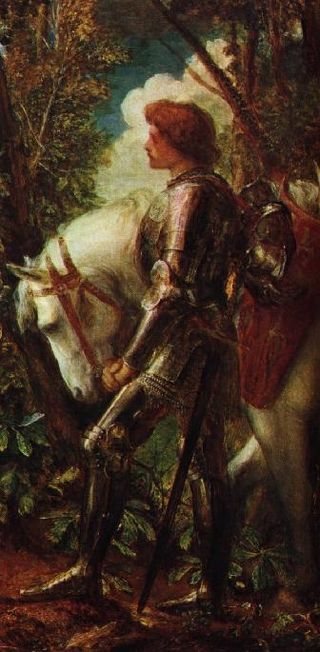
Galahad, sometimes referred to as Galeas or Galath, among other versions of his name, is a knight of King Arthur's Round Table and one of the three achievers of the Holy Grail in Arthurian legend. He is the illegitimate son of Sir Lancelot du Lac and Lady Elaine of Corbenic and is renowned for his gallantry and purity as the most perfect of all knights. Emerging quite late in the medieval Arthurian tradition, Sir Galahad first appears in the Lancelot–Grail cycle, and his story is taken up in later works, such as the Post-Vulgate Cycle, and Sir Thomas Malory's Le Morte d'Arthur.

The Knights of the Round Table are the legendary knights of the fellowship of King Arthur that first appeared in the Matter of Britain literature in the mid-12th century. The Knights are an order dedicated to ensuring the peace of Arthur's kingdom following an early warring period, entrusted in later years to undergo a mystical quest for the Holy Grail. The Round Table at which they meet is a symbol of the equality of its members, who range from sovereign royals to minor nobles.
Percival's sister is a role of two similar but distinct characters in the Holy Grail stories within the Arthurian legend featuring the Grail hero Percival (Perceval). The first of them is named Dindrane, the second is usually unnamed and is known today as the Grail heroine.

Elaine is a name shared by several female characters in Arthurian legend, where they can also appear under different names depending on the source. They include Elaine of Astolat and Elaine of Corbenic among others.

The Fisher King is a figure in Arthurian legend, the last in a long line of British kings tasked with guarding the Holy Grail. The Fisher King is both the protector and physical embodiment of his lands, but a wound renders him impotent and his kingdom barren. Unable to walk or ride a horse, he is sometimes depicted as spending his time fishing while he awaits a "chosen one" who can heal him. Versions of the story vary widely, but the Fisher King is typically depicted as being wounded in the groin, legs, or thigh. The healing of these wounds always depends upon the completion of a hero-knight's task.

Bors is the name of two knights in Arthurian legend, an elder and a younger. The two first appear in the 13th-century Lancelot-Grail romance prose cycle. Bors the Elder is the King of Gaunnes (Gannes/Gaunes/Ganis) during the early period of King Arthur's reign, and is the brother of King Ban of Benoic and the father of Bors the Younger and Lionel. His son Bors the Younger later becomes one of the best Knights of the Round Table and participates in the achievement of the Holy Grail.
Ban of Benoic is a character in Arthurian legend. King Ban first appeared by this name in the Lancelot propre part of the 13th-century French Vulgate Cycle as the ruler of the realm in France named Benoic and father of Sir Lancelot and Sir Hector de Maris, as well as brother of King Bors. Ban of Benoic largely corresponds to the other versions of the father of Lancelot, including Pant of Gen[n]ewis in the German Lanzelet, Haud of Schuwake in the English Sir Lancelot du Lake, and Domolot of Lokva in the Belarusian Povest' o Tryshchane.

Gaheris is a Knight of the Round Table in the chivalric romance tradition of Arthurian legend. A nephew of King Arthur, Gaheris is the third son of Arthur's sister or half-sister Morgause and her husband Lot, King of Orkney and Lothian. He is the younger brother of Gawain and Agravain, the older brother of Gareth, and half-brother of Mordred. His figure may have been originally derived from that of a brother of Gawain in the early Welsh tradition, and then later split into a separate character of another brother, today best known as Gareth. German poetry also described him as Gawain's cousin instead of brother.

The Lancelot-Grail Cycle, also known as the Vulgate Cycle or the Pseudo-Map Cycle, is an early 13th-century French Arthurian literary cycle consisting of interconnected prose episodes of chivalric romance originally written in Old French. The work of unknown authorship, presenting itself as a chronicle of actual events, retells the legend of King Arthur by focusing on the love affair between Lancelot and Guinevere as well as the religious quest for the Holy Grail. The cycle expands on Robert de Boron's "Little Grail Cycle" and the works of Chrétien de Troyes, previously unrelated to each other, by supplementing them with additional details and side stories, as well as lengthy continuations, while tying the entire narrative together into a coherent single tale. Its alternate titles include Philippe Walter's 21st-century edition Le Livre du Graal.
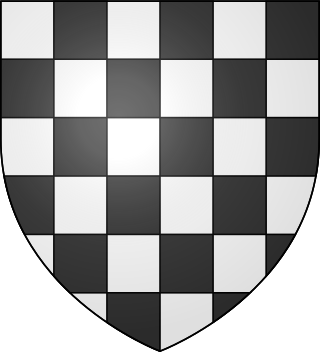
Palamedes is a Knight of the Round Table in the Arthurian legend. He is a Middle Eastern pagan who converts to Christianity later in his life, and his unrequited love for Iseult brings him into frequent conflict with Tristan. Palamedes' father King Esclabor and brothers Safir and Segwarides also join the Round Table. The romance Palamedes was named after him.
King Claudas is a fictional king who is an opponent to King Arthur, Lancelot, and Bors in Arthurian literature. His kingdom is situated in the Berry and is named "Terre Deserte", or "Land Laid Waste", so called because of the destruction Uther Pendragon had wrought there.

The Post-Vulgate Cycle, also known as the Post-Vulgate Arthuriad, the Post-Vulgate Roman du Graal or the Pseudo-Robert de Boron Cycle, is one of the major Old French prose cycles of Arthurian literature from the early 13th century. It is considered essentially a rewriting of the earlier and more popular Vulgate Cycle, with much left out but also much added, including characters and scenes from the Prose Tristan. The cycle has not survived in any manuscript in its entirety and has been reconstructed from fragments in various languages.
Josephus, also called Josephe or Josephes, is the son of Joseph of Arimathea and an early keeper of the Holy Grail in some tellings of the Arthurian legend. He makes appearances in the Quest del Saint Graal section of the Lancelot-Grail cycle, but his story is fully told in the Estoire del Saint Grail, a prequel section written somewhat later. In the Estoire he is invested as bishop by an apparition of Jesus with the implication that he was the first to receive his orders. Josephus is considered the primary holy man of the group, which is in contrast with the Lancelot-Grail's major source, Robert de Boron's Joseph d'Arimathie, in which his father is the undisputed leader. This is likely due to the authors' assertion that various great families are descended from Joseph; his virtuous son remains chaste and has no children.
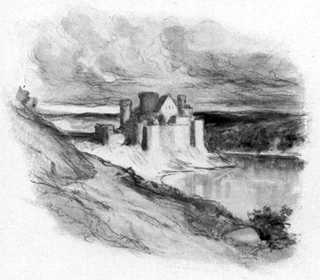
Corbenic is the name of the Grail castle, the edifice housing the Holy Grail in Arthurian legend. It is a magical domain of the Grail keeper, often known as the Fisher King. The castle's descriptions vary greatly in different sources, and it first appears by that name in the Lancelot-Grail cycle where it is also the birthplace of Galahad.
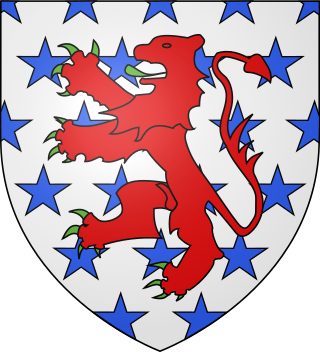
Galehaut is a half-giant knight and sovereign prince in the Arthurian legend. He is most prominent within the Lancelot-Grail prose cycle where he is a noble enemy turned an ally of King Arthur as well as an inseparable friend of Arthur's champion Lancelot. The figure of Galehaut should not be mistaken with Lancelot's son, Galahad, and some other similarly named characters.

King Arthur and His Knights of the Round Table is a retelling of the Arthurian legends, principally Thomas Malory's Le Morte d'Arthur, by Roger Lancelyn Green. It was intended for a child audience. It was first published by Puffin Books in 1953 and has since been reprinted many times. In 2008, it was reissued in the Puffin Classics series with an introduction by David Almond, and the original illustrations by Lotte Reiniger.
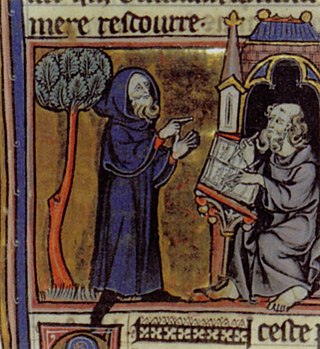
Merlin is a partly lost French epic poem written by Robert de Boron in Old French and dating from either the end of the 12th or beginning of the 13th century. The author reworked Geoffrey of Monmouth's material on the legendary Merlin, emphasising Merlin's power to prophesy and linking him to the Holy Grail. The poem tells of his origin and early life as a redeemed Antichrist, his role in the birth of Arthur, and how Arthur became King of Britain. Merlin's story relates to Robert's two other reputed Grail poems, Joseph and Perceval. Its motifs became popular in medieval and later Arthuriana, notably the introduction of the sword in the stone, the redefinition of the Grail, and turning the previously peripheral Merlin into a key character in the legend of King Arthur.
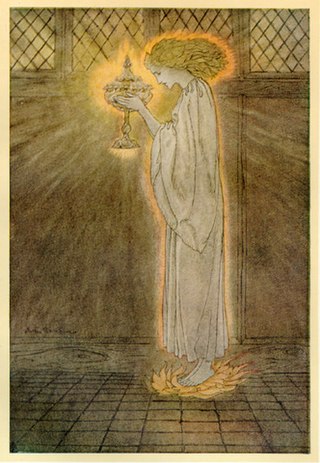
Elaine or Elizabeth, also known as Amite, and identified as the "Grail Maiden" or the "Grail Bearer", is a character from Arthurian legend. In the Arthurian chivalric romance tradition, she is the daughter of the Fisher King, King Pelles of Corbenic, and the mother of Galahad from her rape of Lancelot. She should not be confused with Elaine of Astolat, a different woman who too fell in love with Lancelot.
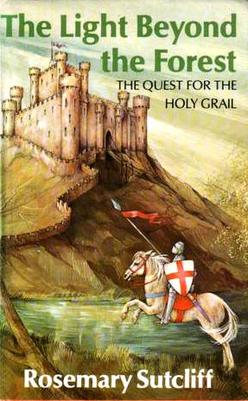
The Light Beyond the Forest: The Quest for the Holy Grail is the second book in Rosemary Sutcliff's Arthurian trilogy. While the previous book, The Sword and the Circle, is a collection of Arthurian tales including the creation of the Round Table, Sir Gawain and the Green Knight, and Beaumains the Kitchen Knight, this book focuses on the search for the Holy Grail, cutting back and forth between the quests of Lancelot, Bors, Percival, and Galahad.















